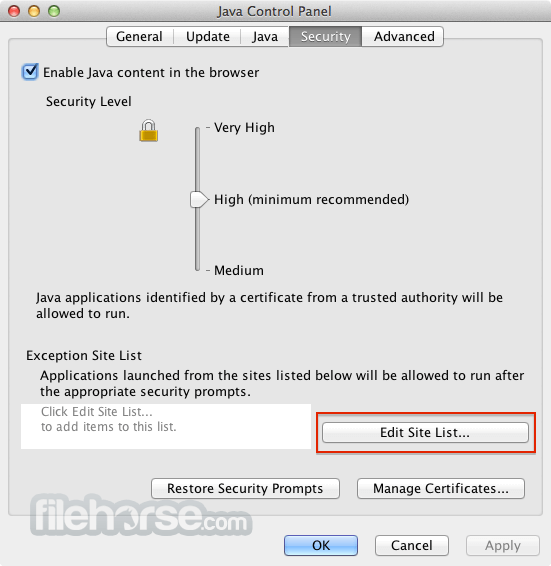The following are the system requirements for installing the JDK and the JRE on macOS:


Java Jre 8 For Mac


Install Java Jre For Mac
$ java -version java version '10.0.2.1-ea' Java(TM) SE Runtime Environment (build 10.0.2.1-ea+13) Java HotSpot(TM) 64-Bit Server VM (build 23.2-b04, mixed mode) Note: If you have not yet installed Apple's Java OS X 2012-006 update, then you are still using a version of Apple Java 6 that includes the plug-in and the Java Preferences application. It’s really simple to update Java on Mac OS – 3 simple steps. Go to System Preferences and click on Java icon on the bottom. Java Control Panel will be opened, go to Update tab and press Update Now. Java Installer will be opened, press Install Update button. Wait a little bit while a new version is downloading. Technical Note TN2031: This Technote describes the various Macintosh-specific runtime properties that can be given to a Java application running on Mac OS X. The properties vary in function from feeding required information to a packaged.app Java application wrapper, to making a Java application more Mac-like. Various methods of specifying these properties to a given applcation are also. Compiling and running a Java application on Mac OSX, or any major operating system, is very easy. Apple includes a fully-functional Java runtime and development environment out-of-the-box with OSX, so all you have to do is write a Java program and use the built-in tools to compile and run it. But I recently bought a Mac with OS 10.4 and while building simple java programs is nice, it does not seem to be that easy to build j2ee apps. I've used windows and linux over the years and building j2ee apps wasn't that difficult. I haven't been that impressed with my Mac when it comes to building j2ee apps.
Java Jre For Mac Download
Any Intel-based computer running macOS.
Administrator privileges.
You cannot install Java for a single user. Installing the JDK and JRE on macOS is performed on a systemwide basis for all users. Administrator privileges are required to install the JDK and JRE on macOS.
When you install the JDK, it also installs the JRE. However, the system will not replace the current JRE with a lower version.
To determine the current JRE version installed on your system, see Determining the JRE Version Installed on macOS. To install an earlier version of the JRE, you must first uninstall the current version. See Uninstalling the JRE on macOS.
When you install the JRE, you can install only one JRE on your system at a time. The system will not install a JRE that has an earlier version than the current version.
To determine the current JRE version installed on your system, see Determining the JRE Version Installed on macOS. To install an earlier version of the JRE, you must first uninstall the current version. See Uninstalling the JRE on macOS.
Note:
Installing a JRE from Oracle will not update
java -versionsymlinks or addjavato your path. To do this, you must install the JDK.
